hankyoreh
Links to other country sites 다른 나라 사이트 링크
[Interview] Looking behind 28 years of travel in North Korea

Austrian economic and renowned expert on North Korea Rudiger Frank serves as the head of the Department of East Asian Studies at the University of Vienna. As an expert on North Korea, he’s been operating tours to North Korea with London-based Political Tours since 2012. During the tours, Frank supplements explanations provided by North Korea’s official guides and expands on North Korean history and its current regime during meal times, when the official guides are usually absent.
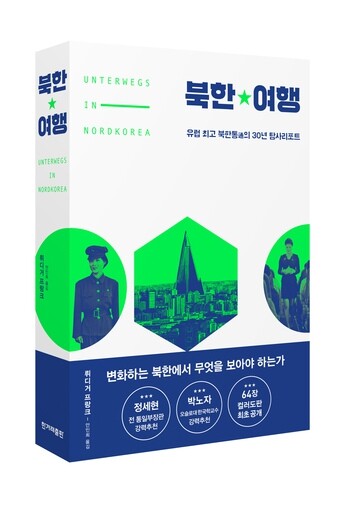
Frank’s first visit to North Korea was in 1991, when he attended Pyongyang’s Kim Il-sung University as a student of the Korean language for six months. His most recent visit was in May of 2018. As a guide on North Korea, he’s visited the country twice a year for the past seven years. His book, “Unterwegs in Nordkorea: Eine Gratwanderung” (“North Korea on the Road: A Tightrope Walk”), which was published in German in February 2018, is largely based on his personal experiences in the North. The book’s Korean edition (Travels in North Korea) was recently released by Hankyoreh Publishers. The Hankyoreh took the time to correspond with Frank via email on his experiences in North Korea.
Hani: How long have you been running tours in North Korea? How did you start?
Actually, I never worked as a professional tour guide. I accompanied tours as what we called an “embedded expert” and never accepted any honorarium or salary. The first such occasion was in 2012, when I followed the recommendation of an old friend – a former UK ambassador to North Korea. The name of the company way Political Tours, based in London. To be honest, I was very reluctant at first. I had been to North Korea many times before, starting in 1991, but I usually went there as a student, a scholar or an expert. The idea of traveling with a group of tourists was very strange for me, and I was skeptical. However, I quickly discovered that this was a very interesting, useful and even enjoyable way for me to learn more about North Korea. In fact, it was the only available legal way of doing field research. The groups were always very small, less than 10 people. The group members were highly educated: lawyers, medical doctors or businessmen. Some of them even held leading positions at major global corporations. They were genuinely interested in learning more about North Korea, and they appreciated my additions to what the two official North Korean guides told us. I learned a lot from them, too.
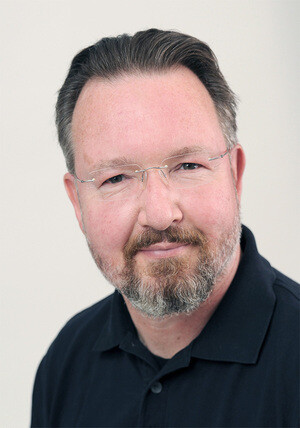
Hani: What was your role as the “embedded expert?”
My role on these tours was to provide background information from a Western perspective. We had breakfast, lunch and dinner as a group, without our North Korean tour guides. They usually preferred to have their meals separately. During the meals, I provided an overview of Korea’s history or of specific aspects of North Korean affairs as I knew them from my research. The group members could ask questions that they were reluctant to ask the official guides, and we could have an exchange on what we had seen during the day.
Hani: How many trips have you taken to North Korea in this capacity?
I first traveled to North Korea in 1991 and returned a couple of times in various capacities. As for accompanying guided tours, I started in 2012 and usually went once a year, sometimes twice a year. The book I have written is based on all my travels in the last 28 years, not just the guided tours.
Hani: What are some of your most memorable experiences from accompanying tours in North Korea?
It is difficult to identify the most memorable comment. I find that travelers are often shocked to see how different the image they got from our media is, compared to what they actually get to see with their own eyes in North Korea. These are intelligent people, so of course they know what propaganda is, and that North Korea is trying to show only the positive aspects and to hide the negative aspects. What most visitors do not expect is that there are positive aspects at all. In a way, I would call this a failure of our own, Western propaganda. I remember June 2000, when Kim Dae-jung went to meet Kim Jong-il. I was in Seoul at that time. South Koreans had previously been told that Kim Jong-il couldn’t speak Korean properly, so they were surprised to hear him speak clearly. Our own clumsy propaganda had turned something very normal into a great PR victory for Kim Jong-il. The same is happening when we describe North Korea only as a dark, dirty and sad place. It is too easy for the North Korean state to show that such a one-sided image is wrong. I think we need a more realistic picture of North Korea, if we want to solve all the important related problems like human rights or the nuclear threat.
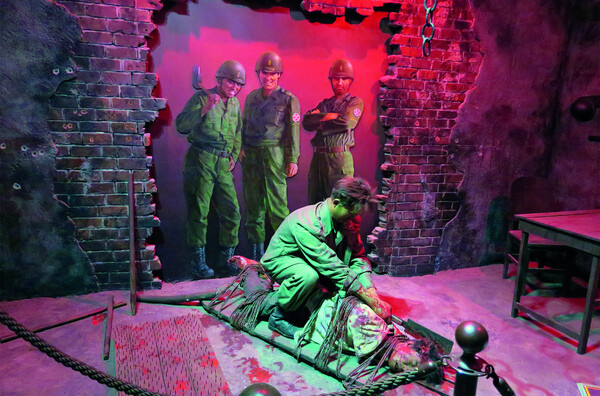
What foreigners like and dislike about North Korea
Hani: What are travelers’ usually most pleased with during the tours, and what are their biggest complaints?
The biggest complaints are always about the freedom of movement. When Western tourists are in a foreign country, they are used to leaving the hotel individually and at their own will. In North Korea, this is not possible; one can only walk around Pyongyang or other cities together with a guide, never alone. This restriction of individual freedom is very difficult to accept. Often, tourists also complain that they are restricted in taking photos. On the other hand, tourists often were very happy about the friendliness and the humor of the people and the willingness of the North Korean guides to help them and to explain things.
Hani: The Korean title of your book is “Travels in North Korea.” Is it similar to the Germany title? We hear around 10,000 copies have been sold since its release in February last year.
No, it is more like "Walking a tightrope while traveling North Korea This title is impossible to translate, because it is a wordplay in German. "Walking a tightrope" in German is "Gratwanderung," but that can also mean "walking along a mountain ridge," and as you know, Korea is very mountainous.
Hani: There are around 30 agencies in Germany that run tours to North Korea. Is there a rising trend in travel to North Korea among Germans? If so, why do you think so?
As I write in my book, most Western tourists who go to North Korea do so out of political interest. Many Germans are well educated, they want to be informed about political affairs, and they have the money to travel. Especially since the first nuclear test in 2006, our media have been full of reports about North Korea. But many Germans want to see with their own eyes. I think this is the main reason why there are so many North Korea related travel agencies in Germany. But we should also be aware that we are still talking about a small niche market. I don’t think that more than 1,000 Germans travel to North Korea annually, perhaps even less.
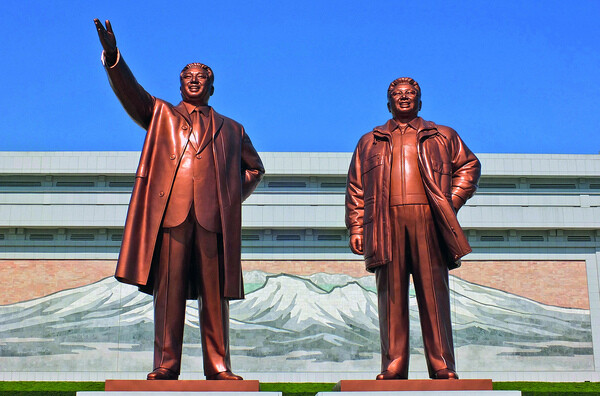
Favorite travel spots in North Korea and the rewards of traveling there
Hani: What is your favorite spot in North Korea?
By far my most favorite spot in North Korea is on the northwestern side of Mt. Janam, the central mountain of Kaesong. From there, you have the most beautiful view of the old town. I could sit there for hours and just watch the scenery. Because it was close to Panmunjom, Kaesong was not bombed during the Korean War, so many old buildings are still there. Think of a whole city consisting of smaller Hanok houses. It gives me an impression of how Korea looked like in old times. Another place I really like is Rason, because it provides something like a preview on how North Korea could develop with fewer restrictions and more international cooperation.
Hani: What’s a favorite spot among travelers?
As I said before, most Western tourists go to North Korea out of political interest. So they are mostly interested in political sights. Many find Panmunjom very impressive, because of all the history they can witness there, and because they have seen it on TV so often. The most excited comments I have heard were after visiting the Arirang Festival. To some tourists, the visit to Kumsusan Palace of the Sun (the mausoleum of Kim Il-sung and Kim Jong-il) was the most memorable part of the journey. However, when I asked that question to my various tour groups, I usually got the answer that they found the complete tour to be impressive, and that they could not single out the “best” or “most memorable” place.
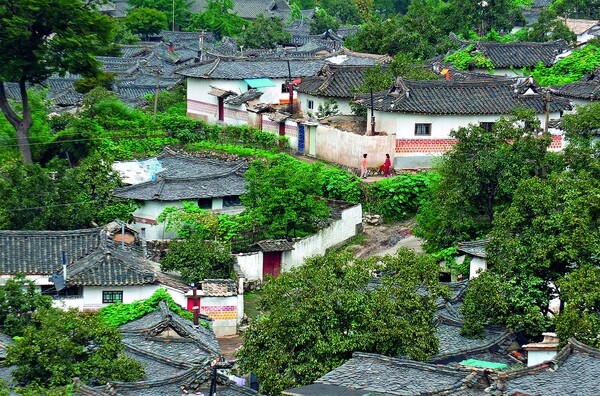
Hani: When was your most recent visit to North Korea, and where did you go?
My last trip to North Korea so far was in May 2018. We went to Pyongyang, then South to Kaesong and Panmunjom, and North to Pyongsong and Mt. Myohyang. A highlight of that tour was a visit to the International Trade Fair in Pyongyang.
Hani: What has been the most rewarding experience during your travels to North Korea?
Traveling to North Korea is physically and mentally very stressful for me, so I find it difficult to talk about rewarding moments. But I am usually very happy to see progress in the degree of marketization and commercialization. Every time I go there, something new has happened. More cars, more gas stations, more mobile phones, markets, stores and bike rental stations. I believe that the best way to improve the life of the North Korean people, and to eliminate the danger of a war, is by achieving economic development. This will make the North Koreans stakeholders of peace and stability. Therefore, seeing progress in this regard makes me happy.
Hani: What are the best spots for sightseeing in North Korea? You mention places like the eastern coast off Chongjin, the Kaesong Folk Hotel and Mt. Chilbo in your book.
As I said before, I personally like the old town of Kaesong and the folk hotel there a lot. But there are many other beautiful spots in North Korea, for example the Pohyon Temple Buddhist monastery in Mt. Myohyang with its beautiful gardens. For us Germans, it is unusual to see mountains together with the sea, because of our country’s geography. We therefore also like the eastern coast very much.
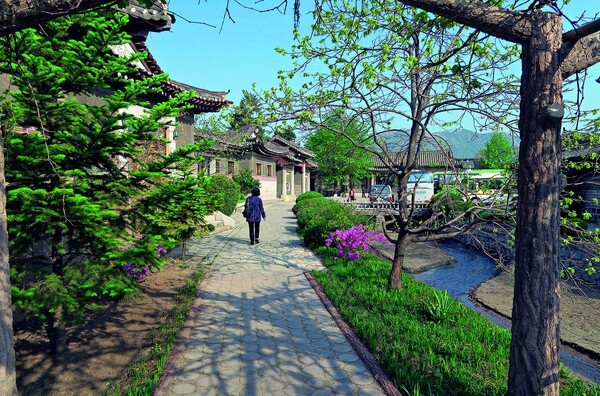
Initial reasons for interest in Korea
Hani: You went to Kim Il-sung University after Germany’s unification. What sparked your interest in Korea?
After German unification, I discovered that there were very few experts on the Korean economy in unified Germany. So I decided to become such a person. Korea is a very interesting case in many ways: history, culture, politics, economy. I am impressed by the speed at which South Korea has achieved economic growth – and by the political and social price it had to pay for this. Furthermore, as a German who has experienced division and then unification, I have of course a special interest in Korea.
Hani: You studied at Kim Il-sung University for six months. What did your studies mainly comprise of?
I studied Korean language there. Unfortunately, I did learn as much as I wanted. One reason was that contact with people outside the classroom was very, very limited. I found that enormously frustrating and almost lost my interest in Korea after returning to Berlin in 1992. As I’ve heard from Western students in Pyongyang, this situation has now strongly improved.
Hani: Where did you get your masters and PhD?
I got my MA degree from Humboldt-University in Berlin, and my PhD in Economics from Duisburg University.
Hani: What was the topic of your PhD thesis?
My PhD thesis was on telecommunications reform in South Korea. The most important result to me was the discovery that deregulation in the 1990s followed the same logic as state-led economic development during the 3rd, 4th and 5th Republic in South Korea. The South Korean state identified strategic sectors of the economy and promoted them massively. Unlike socialist countries, however, it used the market to achieve its strategic development goals. So when it found that telecommunications needed competition, it decided in favor of privatization and deregulation. I found this simultaneous existence of state guidance and reliance on private ownership and the market very fascinating.
Hani: You’re currently the head of the Department of East Asian Studies at the University of Vienna.
Yes. I am Professor of East Asian Economy and Society, and I am the Head of the Department of East Asian Studies. At the department, we have Chinese, Japanese and Korean Studies. We have about 65 researchers and lecturers, and about 1500 students at all levels. The program I personally teach (East Asian Economy and Society) is an English-language masters program.
Hani: How long have you been at the University of Vienna? What are some of the courses you teach?
I have been working in Vienna since 2003. The courses I teach include “Economic Development in East Asia”, “Economic Systems in East Asia”, “History of East Asia”, and “Economy, Politics and Society of North Korea.”

Diminished value of political capital and the rise of the North Korean middle class
Hani: What are some major changes North Korea has seen in the past 30 years? What sparked those changes?
There are two major changes. One concerns the value of political capital. When I first came to North Korea, the biggest challenge people had was access to goods. Money and prices did not matter that much, the problem was the availability of many products and services. If a North Korean wanted something, he needed political capital to get it: party membership, personal relations, good pedigree. This has changed substantially in the 21st century, first under Kim Jong-il and then under Kim Jong-un. Now, North Korea is in some ways a “normal” country, where almost everything is available as long as one has the right amount of money to pay for it. Now, it does not matter so much anymore if you are a party member of a grandson of a revolutionary. You just need to have money – like in our own societies. Of course, you can still use your political capital to get money, so the old elite of North Korea is also part of the new elite.
Secondly, and related to this, I find the emergence of a middle class to be one of the most important changes over the last decades. There are now over 4 million people who are not upper class, but not lower class either. Many of them live in Pyongyang, but not all of them. Most are based in the cities though. They have a good standard of living, a mobile phone, an electric bicycle, access to foreign currency. They are well informed, and their economic power gives them self-confidence. They do not want to lose all this, so they are not interested in a second Korean War. They want to make money, and they want an even better life for their children. The policy of Kim Jong-un can be understood as an attempt to keep the middle class happy. Moreover, this middle class is visible to everybody. So even poor people see that their neighbors are doing much better. This creates both frustration (Why not me?) and optimism (If he can make it, then I can make it, too!). North Korean society has become very dynamic and diverse, and this can be seen when one visits the country.
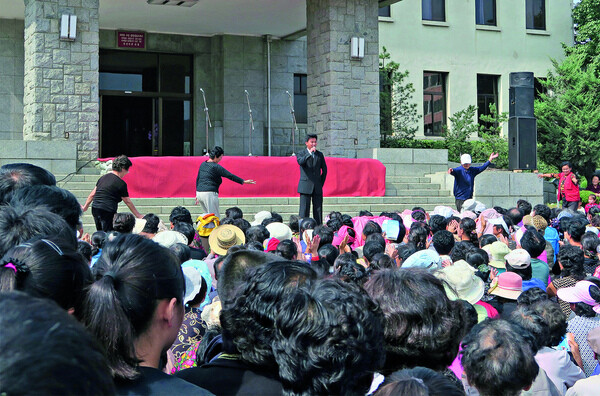
Korea’s fate should be determined by Koreans
Hani: South Koreans have demonstrated a relatively positive outlook on inter-Korean relations following the Pyeongchang Olympics. Do you share this optimism, and why or why not?
Pyeongchang has helped start a complicated process. I liked the fact that the South Korean president took an active role this time, rather than waiting for a signal from Washington or Beijing. Korea is Korea, and its fate should be determined by Koreans. Foreigners should be welcomed as partners, but not as guides.
Hani: What is the most pressing issue in South Korea regarding preparations for unification?
Learning from the German experience, I think among the most important things that South Korea should do is to better understand what is going on in North Korea. This requires many intense, regular people-to-people contacts and visits. Actual cooperation, for example in joint economic projects, will help Koreans to get to know each other. A major goal should be to expand bilateral tourism - South Koreans traveling to the North, and North Koreans traveling to the South. This sounds very unrealistic at the moment, but I think it is important to have a vision of the future. Koreans need to eliminate positive and negative illusions about each other. This is the foundation for solving all other minor and major issues.
Necessity of East Asian regional union without China or USA
Hani: What are your views on the policies of the Moon administration? Do you have any advice to offer?
My recommendation to the Moon government would be to develop and keep good relations with China and the USA, and at the same time seek a multilateral alliance with other countries that are in a similar situation as small or middle powers. A couple of years ago, I developed the idea of solving the Korean problem as part of a larger East Asian regional initiative. If something like an East Asian Union would exist, it would offer a new, third way for the two Koreas. This East Asian Union should not include China or the USA, because they will always try to dominate such an alliance. It should, however, include Japan, Mongolia, and the ASEAN countries, perhaps Australia and New Zealand. The two Koreas could join such an East Asian union separately, but they would share some structures and responsibilities as part of a larger group of sovereign states. I know that the European Union is having big difficulties at the moment, but I believe that it can nevertheless in principle serve as a model for East Asia, and for the two Koreas.
Hani: Do you think improved inter-Korean relations will bolster South Korea’s economy as well? Why or why not?
Improved relations with North Korea offer many things to South Korea; the term “bonanza” used by Park Geun-hye was not so wrong:
First, it provides a direct land connection to China, a huge market for South Korean export products, meaning reduced logistics costs. Second, if relations with North Korea get better, then investment in South Korea will be less risky for international investors, meaning more more investment. Third, North Korea has many minerals, such as anthracite, magnetite, and gold. Having access to these will reduce South Korean raw material imports. Fourth, North Korea has 25 million people who are in need of almost everything - rice cookers, mobile phones, cars, banking service, insurance, entertainment, etc. And they all speak Korean. This means a huge market expansion for South Korean products and services. Fifth, North Korea is in need of massive investment in roads, railway, telecommunication, electricity, etc., meaning a huge market for South Korean conglomerates. Finally, North Korea has a young, well educated and disciplined workforce, which would ease demographic problems in South Korea and lower labor costs
By Kang Sung-man, senior staff writer
Please direct comments or questions to [english@hani.co.kr]

Editorial・opinion
![[Column] Park Geun-hye déjà vu in Yoon Suk-yeol [Column] Park Geun-hye déjà vu in Yoon Suk-yeol](https://flexible.img.hani.co.kr/flexible/normal/500/300/imgdb/original/2024/0424/651713945113788.jpg) [Column] Park Geun-hye déjà vu in Yoon Suk-yeol
[Column] Park Geun-hye déjà vu in Yoon Suk-yeol![[Editorial] New weight of N. Korea’s nuclear threats makes dialogue all the more urgent [Editorial] New weight of N. Korea’s nuclear threats makes dialogue all the more urgent](https://flexible.img.hani.co.kr/flexible/normal/500/300/imgdb/original/2024/0424/7317139454662664.jpg) [Editorial] New weight of N. Korea’s nuclear threats makes dialogue all the more urgent
[Editorial] New weight of N. Korea’s nuclear threats makes dialogue all the more urgent- [Guest essay] The real reason Korea’s new right wants to dub Rhee a founding father
- [Column] ‘Choson’: Is it time we start referring to N. Korea in its own terms?
- [Editorial] Japan’s rewriting of history with Korea has gone too far
- [Column] The president’s questionable capacity for dialogue
- [Column] Are chaebol firms just pizza pies for families to divvy up as they please?
- [Column] Has Korea, too, crossed the Rubicon on China?
- [Correspondent’s column] In Japan’s alliance with US, echoes of its past alliances with UK
- [Editorial] Does Yoon think the Korean public is wrong?
Most viewed articles
- 1‘We must say no’: Seoul defense chief on Korean, USFK involvement in hypothetical Taiwan crisis
- 2N. Korean delegation’s trip to Iran shows how Pyongyang is leveraging ties with Moscow
- 346% of cases of violence against women in Korea perpetrated by intimate partner, study finds
- 4[Column] Park Geun-hye déjà vu in Yoon Suk-yeol
- 5‘Weddingflation’ breaks the bank for Korean couples-to-be
- 6Will NewJeans end up collateral damage in internal feud at K-pop juggernaut Hybe?
- 7Amnesty notes ‘erosion’ of freedom of expression in Korea in annual human rights report
- 8[Interview] Dear Korean men, It’s OK to admit you’re not always strong
- 9Korean government’s compromise plan for medical reform swiftly rejected by doctors
- 10[Editorial] Japan’s rewriting of history with Korea has gone too far